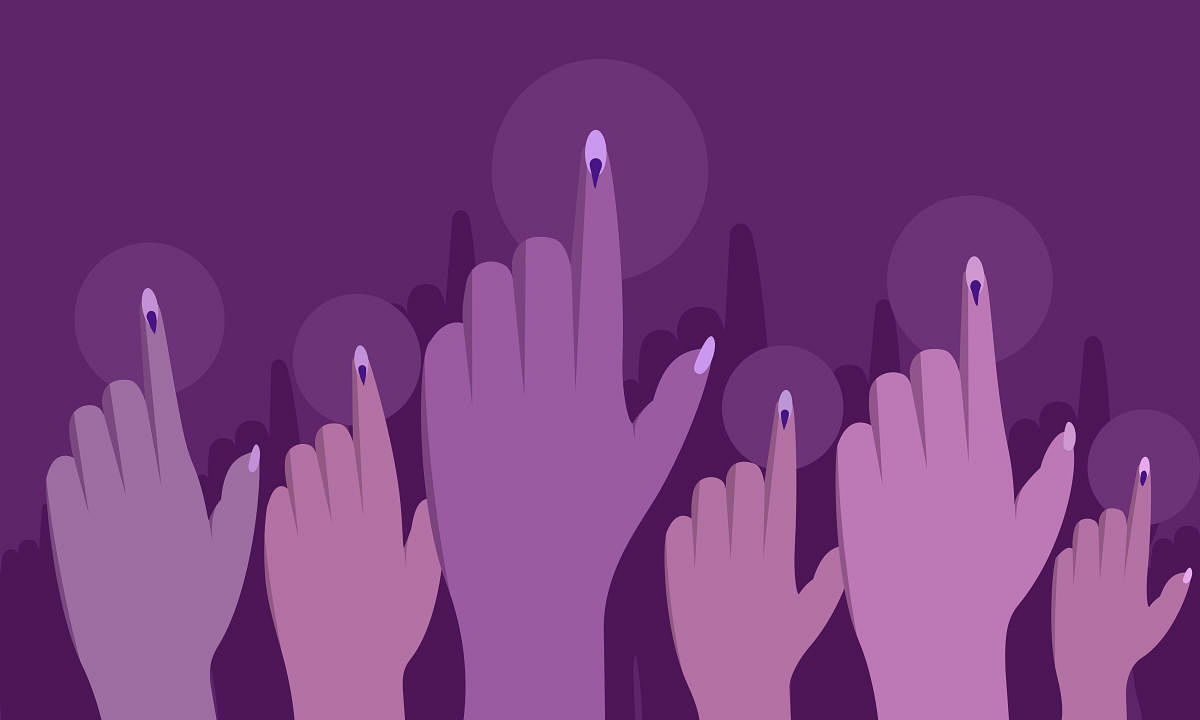The rationale for `None Of The Above’ (NOTA) can vary from country-to-country. Proponents tend to argue that NOTA may help to organically shift attitudes of the political parties and the political class. Critics argue that there is no clear evidence of this happening on the ground.
Three fundamental questions need to be addressed: Does NOTA really empower the voter? Will it bring about change? How can we make NOTA more effective?
There are more than 12 countries where the voters have the option for NOTA. Besides India it exists in countries like France, Sweden, Belgium Greece, Belarus, Spain, Bangladesh, Brazil, Colombia, Chile, Ukraine and the State of Nevada in the US. Many of the states in the US have rejected the need for such an option. NOTA which has been in vogue in Nevada since 1976, was initiated as an attempt to encourage people to vote, which did not really happen.
NOTA was first tried in India in 2009 on an experimental basis. It was only when the Election Commission of India (ECI) decided to pursue the matter with the Supreme Court, did the political leadership take it up seriously.
In fact, up to that point of time, even the government was totally opposed to the idea. The Supreme Court gave its opinion on negative voting and considered NOTA to be a critical part of a democracy in September 2013 in the ‘People’s Union for Civil Liberties versus the Union of India’ judgement. The then Chief Justice of India P Sathasivan argued that “if the right to vote is a statutory vote, then the right to reject a candidate is a fundamental right of speech and expression under the constitution.
However, legalities are necessary but not sufficient, to grasp the fuller implication of NOTA. The rationale of the Supreme Court was that it would compel political parties to field more “sound” candidates with integrity. One is not too sure whether this has really made a difference, since in the first-past-the-post system a candidate from the list rejected by the voter, is still elected.
NOTA tends to sometimes generate a degree of cynicism about the political class and the political system, which could perhaps impact on notions of public involvement, participation and representation.
In the 2014 and 2019 Lok Sabha elections, NOTA accounted for 1.08% and 1.04% of the total votes polled, respectively. One has to also look into the patterns of NOTA voting in various elections. Overall, reserved and tribal constituencies, as well as red corridor districts, have revealed a higher propensity to use NOTA. In some cases, it has contributed to an increase in the voter turnout too.
NOTA should not turn out to be a case of polling for the sake of casting. It is a question of having to vote for the desired leader. Opting for NOTA is as good as not exercising one’s vote since the votes polled for NOTA are technically considered as invalid votes. Hence, it has no bearing on the election outcome per se.
Though the political world can be quite murky, yet the cynicism surrounding the political class should not be exaggerated beyond a point. Even if one of the candidates in the list has a few merits, that is still reason enough to vote for the candidate.
The Supreme Court in 2018 directed the Union government to remove the NOTA option from the ballot papers of the Rajya Sabha and Legislative Council elections. The NOTA option was retained for direct polls.
It is important and sometimes difficult to fix the specific reasons why the NOTA option is exercised. It may be argued that if NOTA gets the maximum number of votes in a constituency, then the system should provide for re-election, without any of the candidates in the previous round.
In Maharashtra, the state election commission passed an order in October 2018 that re-elections will be held if NOTA gets a majority of the votes. A similar order was passed by the Haryana state election commission later. Perhaps a nationwide order of this kind has to be passed by the ECI.
Empirical evidence
Since ballots are secret, much has to be inferred. How and why NOTA is used is not well understood as yet. On a continuum, motivations can vary from cynicism to confusion to alienation. This is due to the lack of clear empirical evidence and systemic dissonance about NOTA.
Whether NOTA is a deliberate choice by the voter is also subject to interpretation and debate. NOTA is not a reform of the system, it is primarily a negative vote and has not necessarily prevented corrupt candidates from contesting. Neither does it impact on the election verdict. In this sense, perhaps one may perceive it much more as a protest vote rather than of any specific electoral value.
One may make a case for adding teeth to NOTA by including the right to reject and recall which is not easy in an expansive and complex country like India. Let us realise every vote is precious and that it has to be exercised positively and judiciously in favour of a candidate, rather than a non-existent one.
NOTA has not necessarily prevented individuals with a criminal background from getting elected nor influenced political parties to nominate better candidates. The real change has to come from within political parties along with meaningful checks-and-balances at a systemic level. The fundamental issue is that though one has the right to vote for NOTA, it does not resolve the problem it is supposed to solve.
This will require larger systemic changes and reforms. As of now, NOTA tends to be a toothless tiger and a symbolic expression of resentment and dissatisfaction. Since NOTA seems to be gaining traction among the electorate, it is time to think of the next logical step to make NOTA more effective and of electoral value.
(The writer is Professor and former Dean (Arts), Department of Political Science, Bangalore University)
